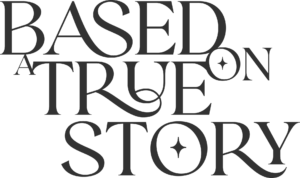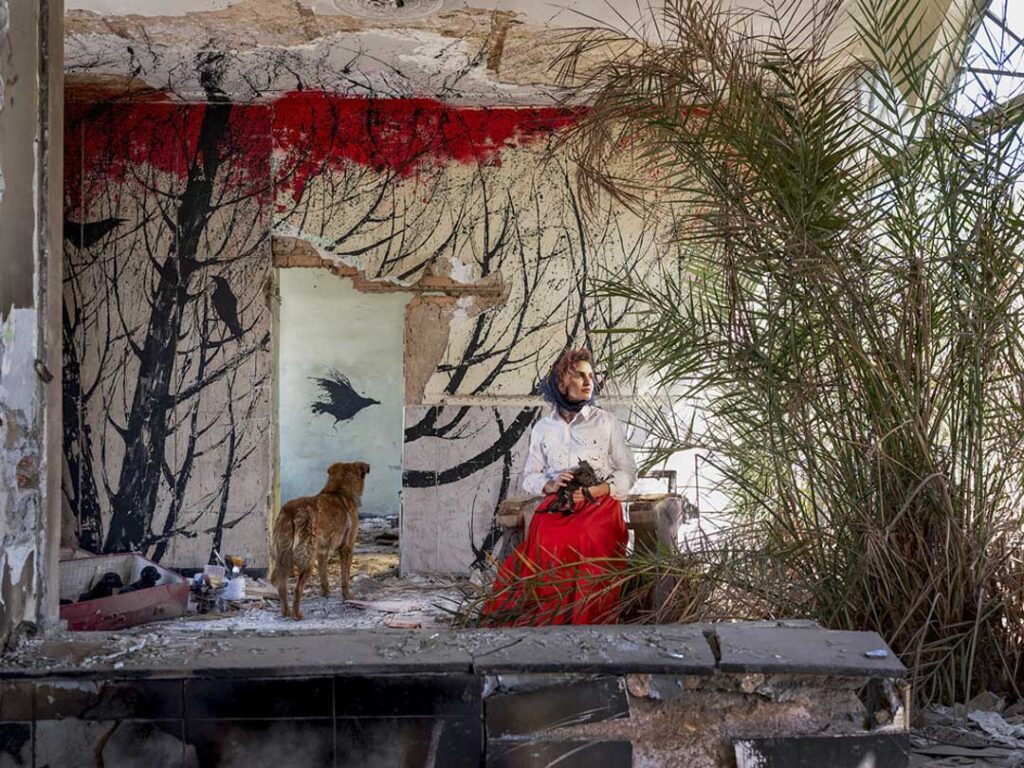
Born during a turbulent era in contemporary Iran, Maryam has always viewed art as her primary means of self-expression. She believes art allows her to explore and articulate her deepest, most inaccessible emotions. Maryam perceives Iran as a juncture between Western civilisation and Eastern heritage, a position that has historically fostered conflict and complex dialogues on gender, identity, and culture. She challenges traditional notions of authorship and subject, creating a dynamic interplay that continuously shifts the viewer’s perception of identity and authorship.
- I am convinced that mediums are related to each other. Persian calligraphy taught me discipline and dedication, painting offered me freedom of expression, and literature provided a structured way to develop and articulate my ideas.
The Scattered Memories of a Distorted Future | 2020
In The Scattered Memories of a Distorted Future, Maryam Firuzi confronts the devastating impact of personal and collective tragedy, using art as a medium for reflection and healing. Triggered by the tragic 2020 crash of a Ukrainian aeroplane in Tehran, Maryam grapples with a profound loss of faith in artistic creation amidst a backdrop of political unrest, economic crisis, mass migration, and the COVID-19 pandemic.
Set against landscapes of ruin, this series explores how art can offer solace and agency in times of despair. Women painters are invited to create in abandoned spaces, their work a silent dialogue with a fractured past and an uncertain future. The imagery of ruins becomes a powerful metaphor for pain, while the act of artistic creation serves as a beacon of resilience. Maryam’s poignant juxtaposition of art and destruction challenges us to consider the role of creativity in the face of loss, offering hope in the ruins of humanity.
- “This series explores the profound shift in my faith in artistic creation. The catalyst was the devastating news on January 8, 2020, when a Ukrainian airplane crashed in Tehran, claiming the lives of all 176 passengers and crew. The ensuing period unfolded with a series of unfortunate events—political turmoil, a water crisis, economic recession, the migration of my family and friends, and the COVID-19 pandemic. Each morning, I wake up to a landscape resembling a demolished site, with everything seemingly in ruins: myself, my family, my friends, my relationships, my city, and my country. The suffering we endure speaks in the language of ruins.As an artist grappling with this collective agony, I seek to explore how artistic creation can serve as a source of healing, inspiration, and efficacy in the face of such devastation. What impact can artists have on this state of ruin? What role do we play in the ruins of humanity’s constructions and creations?In this series, ruins serve as a poignant metaphor for pain. Caught between a silent past and a distorted future, I’ve invited female painters to depict what resonates with them in abandoned places—a symbolic canvas on the masculine history, a portrayal of the visage of the past, and an unanswered question for the future. The juxtaposition of their art against the backdrop of ruins becomes a powerful exploration of the transformative potential inherent in creativity amidst despair.”
In the Shadows of Silent Women
Born during the Iraq-Iran war, Maryam Firuzi embarked on a personal journey to uncover the roots of Iranian womanhood in her series In the Shadows of Silent Women. With over 50,000 kilometres travelled across Iran, Maryam’s project captures the lives of women in intertwined, often overlooked rural communities. These women, deeply shaped by tradition and patriarchy, navigate cultural and linguistic diversity while fighting for their children’s education and the preservation of their ancestral identity.
Maryam contrasts the collective strength of these rural women with the more fragmented struggles of urban women in Iran. Despite the harsh limitations of their environment, these women, connected deeply with nature, turn their hardships into symbols of resilience – producing works that represent beauty, sustainability, and life. Through sixty evocative photographs, Maryam reveals how, in Iran, resistance is embodied by women, and women, in turn, embody the enduring strength of the earth.
Reading for Tehran Streets
In her series Reading for Tehran Streets, Maryam Firuzi transforms the chaotic pulse of the city into a space for reflection and connection. Inspired by the Roman architect Vitruvius’ classification of urban sites as Tragic, Comic, or Satiric, Maryam finds Tehran’s streets steeped in tragedy, leaving little room for contemplation. In a city marked by continuous turmoil, she seeks refuge within the walls of her book-filled apartment, where imagination thrives.
But Maryam doesn’t remain confined. She takes her personal world into the public sphere, intertwining her inner landscape with the urban fabric. By staging herself reading in the streets, she creates a pause, a moment where the fast-paced, overtaking nature of city life is interrupted. Her performance, caught on camera, invites viewers to stop and reflect—to rethink their relationship with the streets, their fellow travellers, and the collective memory of the city.
Through this act, Maryam blurs the boundaries between the personal and the public, the tragic and the comic, creating a new dialogue between the individual and the collective, and reshaping Tehran’s streets into a place for contemplation and shared experience.
There’s Always a Distance
In There’s Always a Distance, Maryam Firuzi confronts the complexities of belonging and the weight of homeland in an era where many artists choose exile over the oppressive confines of censorship. Having grappled with questions about her own decision to remain in Iran, Maryam expresses the profound emotional dichotomy of love for one’s homeland and the ache of isolation.
Her reflections crystallised during her visit to Paris for the Paris Photo exhibition in November 2021, where she engaged with immigrant and exiled artists navigating the nuances of freedom and creation in a foreign land. These encounters prompted Maryam to ponder: How do artists carry their heritage across borders? What value does unrestricted expression hold when contrasted with the deep-rooted ties to one’s past?
For over a century, Paris has served as a sanctuary for Iranian artists, many of whom have found solace and silence in the city’s embrace. With the recent passing of beloved poet Yadullah Royaee, Maryam’s connection to the lives of immigrant artists deepens, as their narratives resonate with her own.
In this evocative series, she metaphorically reconstructs the studios of exiled artists in the streets of Paris, seeking to create a sense of home for those who have lost theirs. Though this home remains unseen, Maryam raises a poignant question: Can an artist transform their art into a new homeland, crafting a sense of belonging amid distance and displacement? Through her lens, Maryam invites us to reflect on the power of creativity as a refuge and a means of connection across cultural divides.
Maryam Firuzi is an Iranian photographer whose work focuses on the intersection of personal narratives and broader social issues.
maryamfiruzi.com | www.instagram.com/maryamfiruzi.official














